 Last additions - Maibara 米原市 Last additions - Maibara 米原市 |

Lake Biwa and Takeshima island off Hikone.Sep 29, 2009
|
|

Looking toward Sakata Station which is on the right of the white roof near the center of the picture.Sep 29, 2009
|
|

Sep 29, 2009
|
|

Sep 29, 2009
|
|

Lookout deck on Mt. Hinade.Sep 29, 2009
|
|

Now this is what I saw from the train. It is a wooden lookout deck.Sep 29, 2009
|
|

The lookout deck in view at the end of the trail.Sep 29, 2009
|
|

RockSep 29, 2009
|
|

Pine treeSep 29, 2009
|
|

Looking toward Nagahama.Sep 29, 2009
|
|

While hiking up, you'll see a few views like this.Sep 29, 2009
|
|

Easy hike and well worth it for the great views of Maibara. This is one of those places you've never heard of, but should visit.Sep 29, 2009
|
|

Go left.Sep 29, 2009
|
|

Sep 29, 2009
|
|

Sep 29, 2009
|
|

Hiking trail on Mt. Hinade.Sep 29, 2009
|
|
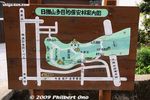
Map of Mt. Hinade. There are short hiking trails on this low mountain.Sep 29, 2009
|
|

Within the Hinade Shrine grounds is this entrance to a hiking trail going up Mt. Hinade-yama. Elevation is only 240 meters so it's an easy climb.Sep 29, 2009
|
|

In the end, they gathered on the sumo ring and clapped their hands in appreciation.Sep 29, 2009
|
|

In the end, the boys take home their prizes in a large garbage bag.Sep 29, 2009
|
|

More matches between the men.Sep 29, 2009
|
|

Finally, the bow twirling ceremony (called Yumitori-shiki). Notice that he faces the shrine.Sep 29, 2009
|
|

Sep 29, 2009
|
|

Uneven match.Sep 29, 2009
|
|

Then for fun, they held random sumo matches regardless of age and size.Sep 29, 2009
|
|

Sep 29, 2009
|
|

Sumo tournament winners.Sep 29, 2009
|
|

Sep 29, 2009
|
|

Sep 29, 2009
|
|

The same men perform the ring-entering ceremony for the east side. There were about 20 men.Sep 29, 2009
|
|

After the ring-entering ceremony, the men remained on the ring and performed the sumo odori dance accompanied by sumo jinku singing.Sep 29, 2009
|
|

Afterward, more children's sumo.Sep 29, 2009
|
|
|
|

Sep 29, 2009
|
|

The men performing the ring-entering ceremony for the west side.Sep 29, 2009
|
|

Sep 29, 2009
|
|

Sep 29, 2009
|
|

Hinade Shrine's priest blesses the wrestlers.Sep 29, 2009
|
|

The wrestlers then walked to the sumo ring.Sep 29, 2009
|
|

Then they held the dohyo-iri ring-entering ceremony performed by the men.Sep 29, 2009
|
|

Sep 29, 2009
|
|

A pillow for this winner.Sep 29, 2009
|
|

While dressed in formal sumo aprons, they first went to the shrine to pray.Sep 29, 2009
|
|

Sep 29, 2009
|
|

Prizes to be awarded.Sep 29, 2009
|
|

Sep 29, 2009
|
|

Sep 29, 2009
|
|

Sep 29, 2009
|
|

The children's sumo were based on age. And they got older.Sep 29, 2009
|
|

It wasn't so crowded. There were some photographers, and it received local TV news coverage.Sep 29, 2009
|
|
|

Sep 29, 2009
|
|

The winners received various household and kitchen goods like towels, pillows, toaster, etc.Sep 29, 2009
|
|

Sep 29, 2009
|
|

Sep 29, 2009
|
|

Sep 29, 2009
|
|

Then the children's sumo matches. Boys only, no girls. This was the main highlight and crowd pleaser.Sep 29, 2009
|
|

OzekiSep 29, 2009
|
|

Sep 29, 2009
|
|

Sep 29, 2009
|
|

Sep 29, 2009
|
|

Sep 29, 2009
|
|

A few more matches by the men were held.Sep 29, 2009
|
|

Winner. The sumo matches are held as religious ceremony dedicated to the shrine's gods.Sep 29, 2009
|
|

YobidashiSep 29, 2009
|
|

Sanyaku Soroifumi has the top three ranking wrestlers (Ozeki, Sekiwake, Komusubi) stomp the ring to further purify the ring as they face the shrine.Sep 29, 2009
|
|

Sep 29, 2009
|
|

The yobidashi caller calls the name of the sumo wrestler.Sep 29, 2009
|
|

The first match was between these two men who had a piece of paper in their mouths.Sep 29, 2009
|
|

Sep 29, 2009
|
|

Sep 29, 2009
|
|

The shrine also has a sumo ring. In the 13th century, Emperor Go-Toba visited the shrine and watched sumo performed by the local people. He offered a yellow cow to the shrine. This was the start of the shrine's annual sumo festival.Sep 29, 2009
|
|

Hinade Shrine in Maibara, Shiga Prefecture has Imperial connections as it also worships the legendary Emperor Ojin.Sep 29, 2009
|
|

The sumo festival started at 1 pm. They had kids and men on both sides of the sumo ring.Sep 29, 2009
|
|

Mt. Hinodeyama with Hinode Jinja Shrine holds an annual sumo festival on the third Mon. of Sept. It features mainly children's sumo and a sumo jinku dance by about 16 men. For the sumo festival, the sumo ring is decorated with four pillars and pieces of cloth. Near JR Sakata Station (Hokuriku Line) in former Omi-cho town.Sep 29, 2009
|
|

A few food and game stalls during the sumo festival.Sep 29, 2009
|
|

Hinade Shrine is dedicated to a god called Sukunahikona-no-Mikoto and Okinaga-sukuneo. 少毘古名命(すくなひこなのみこと)・息長宿禰王(おきながすくねおう)MAPSep 29, 2009
|
|

Sep 29, 2009
|
|

Large torii in the middle of an intersection. It belongs to Hinade Shrine which is on Mt. Hinade.Sep 29, 2009
|
|

Path to Hinade Jinja Shrine.Sep 29, 2009
|
|

Entrance and torii to Hinade Shrine with banners announcing the sumo festival held on the third Mon. of September in Maibara.Sep 29, 2009
|
|

The road around the mountain is decorated with lanterns on the occasion of Hinade Shrine's sumo festival on Sept. 21, 2009.Sep 29, 2009
|
|

Omi Branch of Maibara City Hall is near the foot of Hinade-yama.Sep 29, 2009
|
|

If you look carefully, you might notice a manmade structure on Mt. Hinade. Too small to be a castle, doesn't look like a house, looks like a lookout deck.Sep 29, 2009
|
|

One day in 2009, I finally investigated this mountain in Maibara. It's about 2 km from JR Sakata Station on the Hokuriku Line toward Nagahama. You can rent a bicycle at Sakata Station.Sep 29, 2009
|
|

If you ride the Tokaido Line train between Maibara and Samegai Stations and look out the window in the north, you might notice this low hill called Hinade-yama.Near JR Sakata Station (Hokuriku Line) in former Omi-cho town is Mt. Hinodeyama with Hinode Jinja Shrine holding an annual sumo festival on the third Mon. of Sept. It features mainly children's sumo and a sumo jinku dance by about 16 men.Sep 29, 2009
|
|

Cutouts for you face.Sep 28, 2009
|
|

Poster for the Suijo taiko dance.Sep 28, 2009
|
|

They performed for about an hour and ended at around 4:15 pm. They were scheduled to end at 3:30 pm. Suijo is lucky to have such a great spectacle of a festival.Sep 28, 2009
|
|

Sep 28, 2009
|
|

Bell ringersSep 28, 2009
|
|

Sep 28, 2009
|
|

Sep 28, 2009
|
|

Sep 28, 2009
|
|

Sep 28, 2009
|
|

Sep 28, 2009
|
|

Sep 28, 2009
|
|

Sep 28, 2009
|
|

Sep 28, 2009
|
|
|

Sep 28, 2009
|
|

Sep 28, 2009
|
|

Sep 28, 2009
|
|

Again they spread the mats on the ground and did the seated drumming again. They did everything twice.Sep 28, 2009
|
|

Fukube-furi comes through (again).Sep 28, 2009
|
|

Sep 28, 2009
|
|

Sep 28, 2009
|
|

Sep 28, 2009
|
|

Sep 28, 2009
|
|

Sep 28, 2009
|
|

Suijo Hachiman Shrine Taiko Odori dance in Maibara, Shiga.Sep 28, 2009
|
|

Sep 28, 2009
|
|

Sep 28, 2009
|
|

Sep 28, 2009
|
|

The seated drumming was also interesting.Sep 28, 2009
|
|

Sep 28, 2009
|
|

They face the shrine.Sep 28, 2009
|
|

They had quickly spread four strips of straw mats on the ground for the drummers.Sep 28, 2009
|
|

They also had a seated drumming performance.Sep 28, 2009
|
|

Sep 28, 2009
|
|

Sep 28, 2009
|
|

Sep 28, 2009
|
|

Sep 28, 2009
|
|

The young drummers performed very well.Sep 28, 2009
|
|

Sep 28, 2009
|
|

The taiko drummers are as young as 3rd grade (age 8).Sep 28, 2009
|
|

The drummers formed a few different formations. They lined up in front of the shrine and let the fukube-furi children to march through to the shrine.Sep 28, 2009
|
|

Sep 28, 2009
|
|

After entering the shrine and drumming for a while, they started to form a circle.Sep 28, 2009
|
|

Sep 28, 2009
|
|

First they danced in a circle.Sep 28, 2009
|
|

Sep 28, 2009
|
|

The taiko drum dance started as a rainmaking dance in 1671 during a drought. The dance continued until 1947. In 1965, they revived the dance, but held it only once every 5 years due to the cost.Sep 28, 2009
|
|
|

Sep 28, 2009
|
|

The next time this taiko dance will be held will be in Oct. 2014. However, a similar taiko drum dance will be held in Oct. 2010 in neighboring Ueno at Sannomiya Shrine at the foot of Mt. Ibuki.Sep 28, 2009
|
|

Finally the taiko drummers. It took about 30 min. for everyone to enter the shrine.Sep 28, 2009
|
|

Sep 28, 2009
|
|

Flute players enter the shrine.Sep 28, 2009
|
|

Sep 28, 2009
|
|

Sep 28, 2009
|
|

The fukube-furi children gathered on the right.Sep 28, 2009
|
|

Sep 28, 2009
|
|

Sep 28, 2009
|
|

Sep 28, 2009
|
|

One after another, they slowly enter the shrine.Sep 28, 2009
|
|

Sep 28, 2009
|
|

Sep 28, 2009
|
|

Sep 28, 2009
|
|

Sep 28, 2009
|
|

Sep 28, 2009
|
|

They reached the Suijo Hachiman Shrine at 1:30 pm, taking 2 hours to walk 1 km.Sep 28, 2009
|
|

Yakko-furi men arrive.Sep 28, 2009
|
|

Taiko drummers in Suijo.Sep 28, 2009
|
|

Sep 28, 2009
|
|

There were about 50 taiko drummers. They also practiced every day during summer vacation. The boys drummed, while the girls played the flute.Sep 28, 2009
|
|

Sep 28, 2009
|
|

The last group in the procession were the taiko drummers led by four bell ringers. 鉦Sep 28, 2009
|
|

Sep 28, 2009
|
|

Over 30 flute players from Suijo Elementary Schools. They practiced every day during summer vacation. 笛Sep 28, 2009
|
|

They slowly walked step by step in unison.Sep 28, 2009
|
|

Ondo folk dancers. 音頭Sep 28, 2009
|
|

Sep 28, 2009
|
|

Sep 28, 2009
|
|

Sep 28, 2009
|
|

Next were the temple/shrine magistrate followed by the fukube-furi kids waving a wand attached with a gourd.Sep 28, 2009
|
|

Mountain ascetic priests. Two of them blew conch shells once in a while.Sep 28, 2009
|
|

Men dressed as mountain ascetic priests (yamabushi).Sep 28, 2009
|
|

Fukube-furi kids waving a wand attached with a gourd. Small bells were attached to the gourd. ふくべ振りSep 28, 2009
|
|

The men wore kabuki-style make-up (called kumatori 隈取り) on their faces.Sep 28, 2009
|
|

Sep 28, 2009
|
|

You can see yakko-furi men in samurai processions such as daimyo gyoretsu festivals reenacting the sankin kotai procession.Sep 28, 2009
|
|

Sep 28, 2009
|
|

Yakko men carried some luggage and sometimes passed it on to other men. This is Suijo's main road.Sep 28, 2009
|
|

The yakko-furi men chanted, "Ei! Ei!"Sep 28, 2009
|
|

The gourd was the canteen of the old days.Sep 28, 2009
|
|

The procession was headed by this small sound truck which had speakers to amplify the sounds. There is also a tall banner reading "Hachiman Jinja."Sep 28, 2009
|
|

The procession started at the Otabisho on a narrow road near Akiba Shrine. Just follow the crowd or the sound of the drums/bells.Sep 28, 2009
|
|

Mountain ascetic priest getting ready. It was the wives and mothers who worked behinds the scenes to make sure everyone was dressed properly.Sep 28, 2009
|
|

Suijo Hachiman Shrine. Suijo is a small neighborhood near the foot of Mt. Ibuki in Maibara, Shiga Prefecture. It is next to Ueno which is at the foot of Ibuki.Sep 28, 2009
|
|

Suijo Hachiman Shrine is where the procession will arrive and where the taiko drum dance will be performed.Sep 28, 2009
|
|

Most were happy to pose for the hordes of retiree amateur photographers.Sep 28, 2009
|
|

Yakko posing 奴Sep 28, 2009
|
|

Deva godSep 28, 2009
|
|

Tiger man.Sep 28, 2009
|
|
|

After the paint job, they are dressed in a belly band and happi coat.Sep 28, 2009
|
|

Each man had a different painting.Sep 28, 2009
|
|

And faces.Sep 28, 2009
|
|

They also painted the thighs.Sep 28, 2009
|
|

This taiko dance is unique for having these yakko men painted. It takes about 30-45 min. to paint a belly.Sep 28, 2009
|
|

In a local community center in Suijo, they started at 6 am to paint the bellies and thighs of 15 men called yakko. Yakko were manual laborers employed by the samurai. They carried luggage during trips, etc.Sep 28, 2009
|
|

Due to financial reasons, the Suijo Hachiman Shrine Taiko Drum Dance is held only once every 5 years. I went to see it on Sept. 23, 2009. MAPSep 28, 2009
|
|

Jul 22, 2009
|
|

Jul 22, 2009
|
|

Bonbai (Bonsai Plum Tree) exhibitionJul 22, 2009
|
|

LodgingJul 22, 2009
|
|

Green Park Santo tennis courtsJul 22, 2009
|
|

Orchid exhibition. Held at the same time and place as the Bonbai (Bonsai Plum Tree) exhibition.Jul 22, 2009
|
|

Mini golfJul 22, 2009
|
|

Auto camping areaJul 22, 2009
|
|

Kamo Ike-so's winter special: Soba noodles with duck meat.Jul 22, 2009
|
|
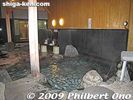
Kamo Ike-so Bihada-no-yu hot spring bath 鴨池荘 美肌の湯Jul 22, 2009
|
|

LodgingJul 22, 2009
|
|

Ibuki no Mieru Bijutsukan. See Mt. Ibuki from the museum.Jul 22, 2009
|
|

Green Park Santo: Ibuki no Mieru Bijutsukan (Ibuki Museum of Art). Small exhibition space with meeting rooms. グリーンパーク山東、伊吹の見える美術館Jul 22, 2009
|
|

Kamo Ike-so ryokan, restaurant and spaJul 22, 2009
|
|

Bonbai (Bonsai Plum Tree) exhibitionJul 22, 2009
|
|

Green Park Santo is an outdoor recreational area with exhibition halls, park, lodging, restaurant, tennis courts, and miniature golf.Jul 22, 2009
|
|

Green Park Santo: Spark Santo. Large indoor space. Venue for the annual Bonbai (Bonsai Plum Tree) exhibition during Jan. to March.Jul 22, 2009
|
|

Bonbai (Bonsai Plum Tree) exhibition at Green Park Santo. Held at Green Park Santo's Spark Santo during Jan. to March. The blossoms might not be in bloom during Jan. MAPJul 22, 2009
|
|

Mt. IbukiJul 22, 2009
|
|

Jul 22, 2009
|
|

Jul 22, 2009
|
|

Jul 22, 2009
|
|

Mt. Ibuki and shinkansen, Maibara, Shiga Prefecture.Jul 22, 2009
|
|

Jul 22, 2009
|
|

Jul 22, 2009
|
|

Most tourists traveling between Tokyo and Kyoto barely notice Mt. Ibuki and Lake Biwa along the way.Jul 22, 2009
|
|

Mt. Ibuki and the entire shinkansen whizzing by.Jul 22, 2009
|
|

Mt. Ibuki and camellias in winter.Jul 22, 2009
|
|

Jul 22, 2009
|
|

You can visit Mt. Ibuki by hiking up from the foot at Ueno or driving up the Ibukiyama Driveway (from Sekigahara) to the summit. MAPJul 22, 2009
|
|

Camellias and Mt. Ibuki, Maibara, Shiga Prefecture.Jul 22, 2009
|
|

Santo-cho manhole with Mishima Pond ducks and fireflies. Maibara, Shiga Pref.Feb 15, 2009
|
|

Mallard ducks. マガモFeb 15, 2009
|
|
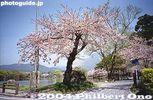
Feb 15, 2009
|
|

Feb 15, 2009
|
|

Feb 15, 2009
|
|

LotusFeb 15, 2009
|
|

Feb 15, 2009
|
|
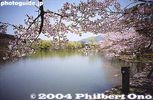
Feb 15, 2009
|
|

Feb 15, 2009
|
|

Feb 15, 2009
|
|

Mt. Ibuki and Mishima Pond cherry blossoms.Feb 15, 2009
|
|

Another part of Mishima Pond in summer.Feb 15, 2009
|
|
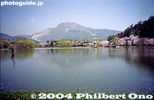
Feb 15, 2009
|
|

Feb 15, 2009
|
|
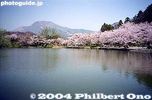
Feb 15, 2009
|
|
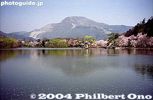
Feb 15, 2009
|
|
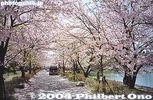
Sakura tunnel.Feb 15, 2009
|
|

Feb 15, 2009
|
|

Inside Mishima Pond Visitors' Center.Feb 15, 2009
|
|

Mishima Pond Visitors' CenterFeb 15, 2009
|
|
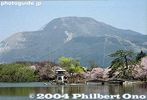
Mt. Ibuki and Mishima Pond in spring.Feb 15, 2009
|
|

Part of the pond is lined with beautiful cherry blossoms which bloom in April.Feb 15, 2009
|
|

Feb 15, 2009
|
|

The ducks welcome feeding by humans. Cat food works well.Feb 15, 2009
|
|

All these ducks love me.Feb 15, 2009
|
|

Birds which come to Mishima Pond.Feb 15, 2009
|
|

Feb 15, 2009
|
|

Feb 15, 2009
|
|
| 1947 files on 8 page(s) |
 |
 |
5 |  |
 |
|